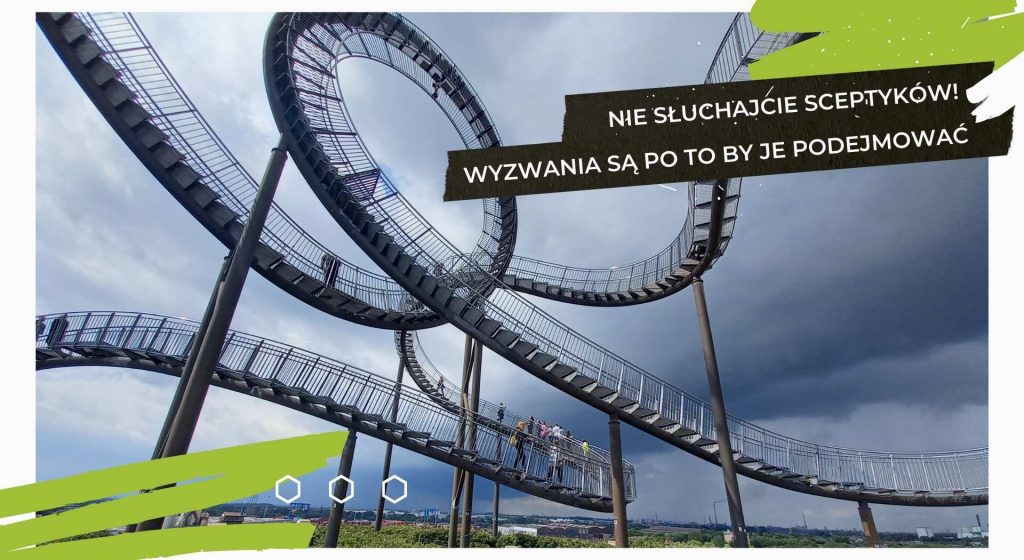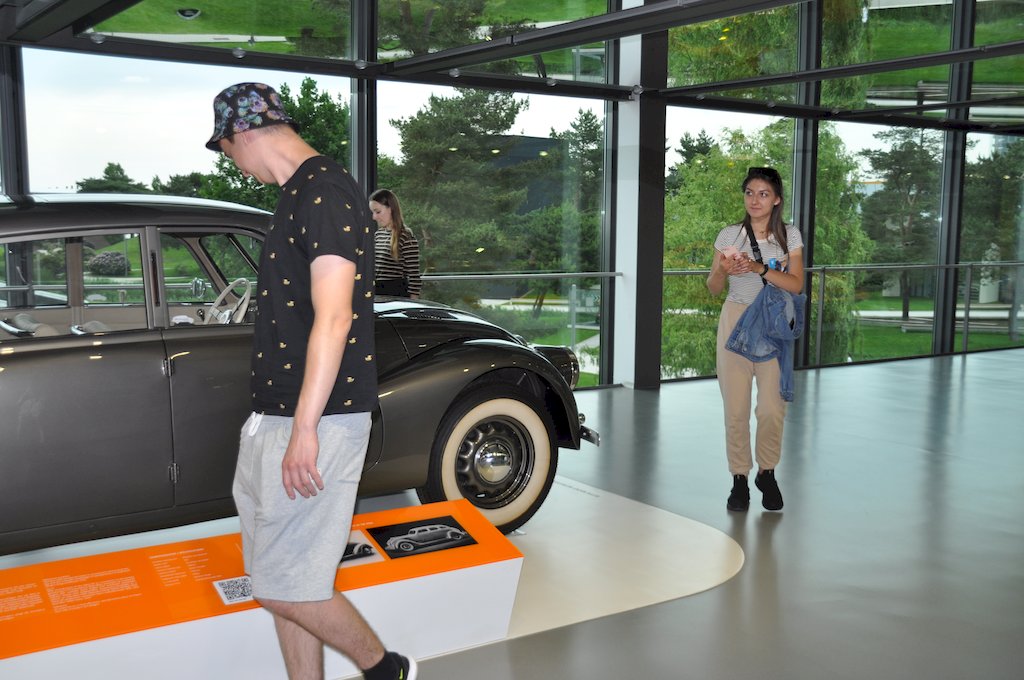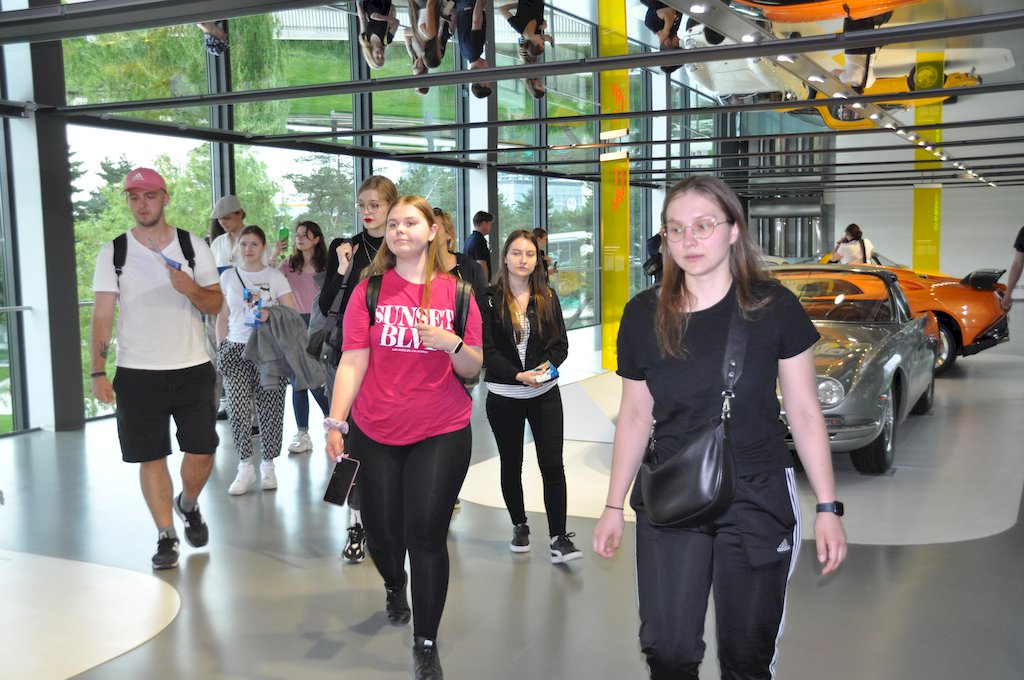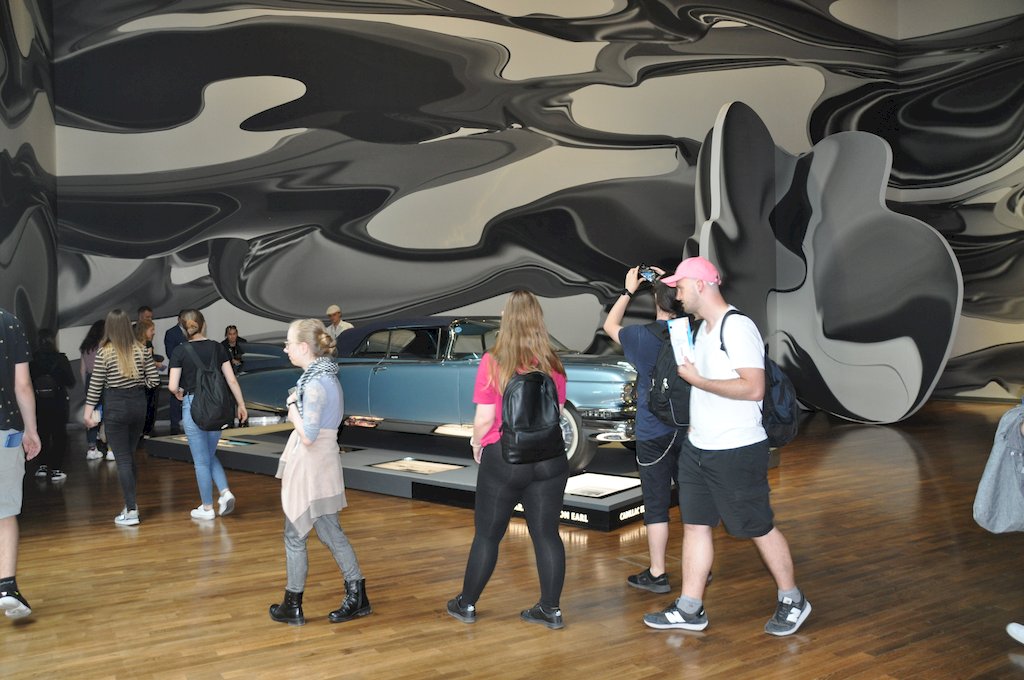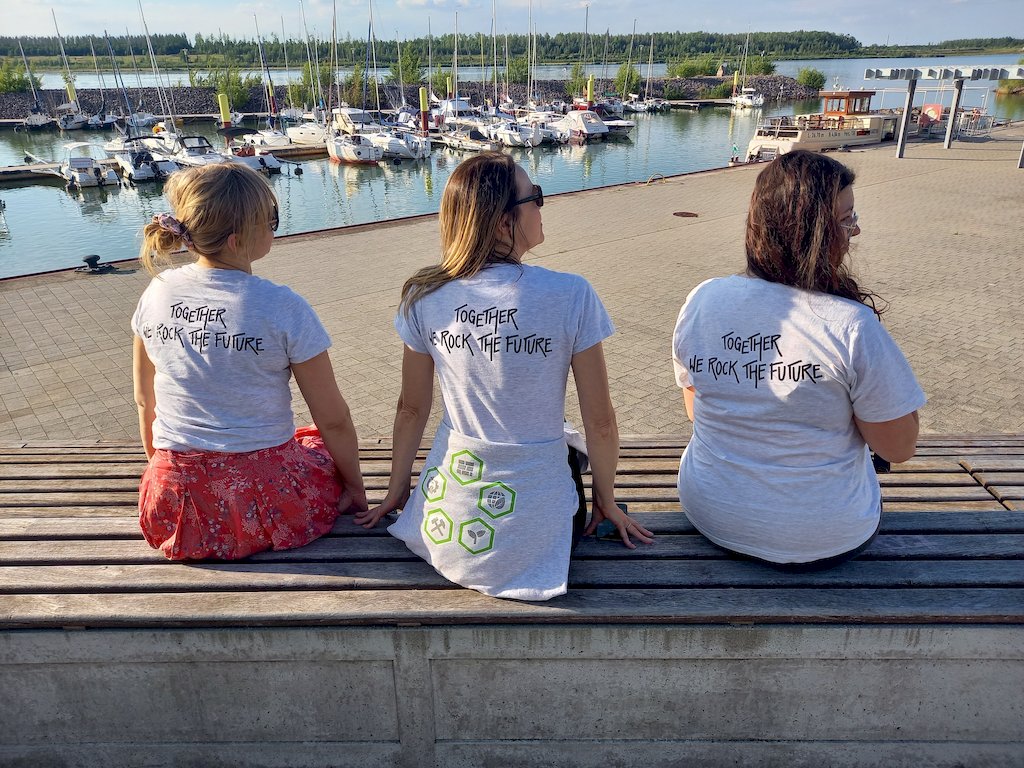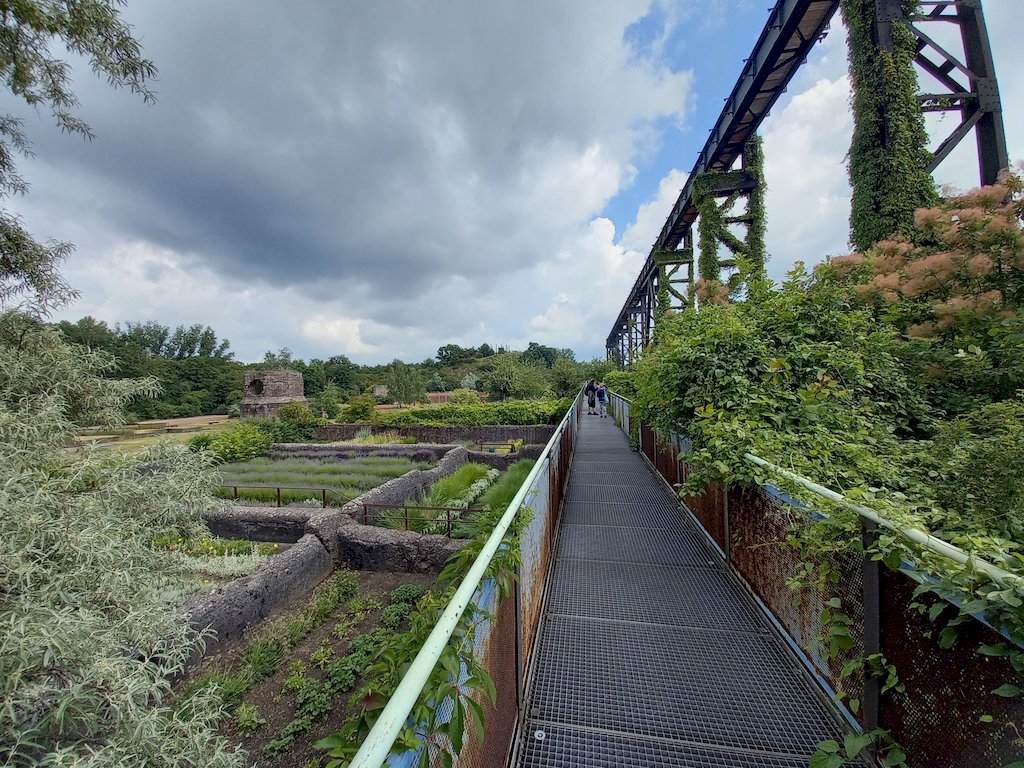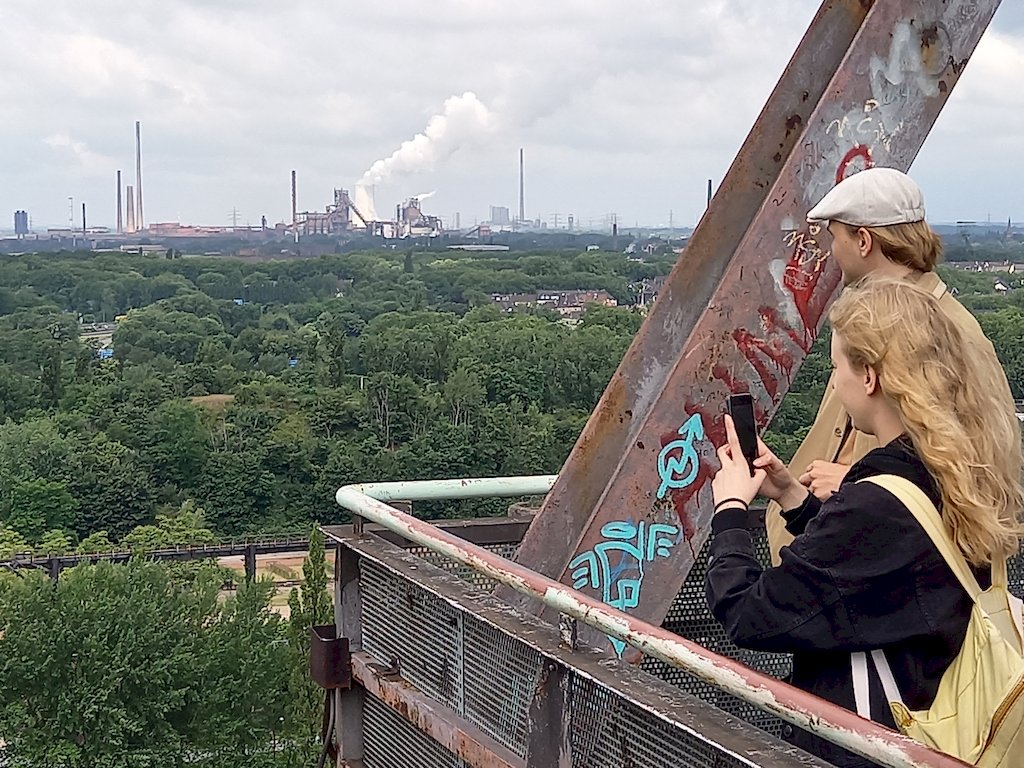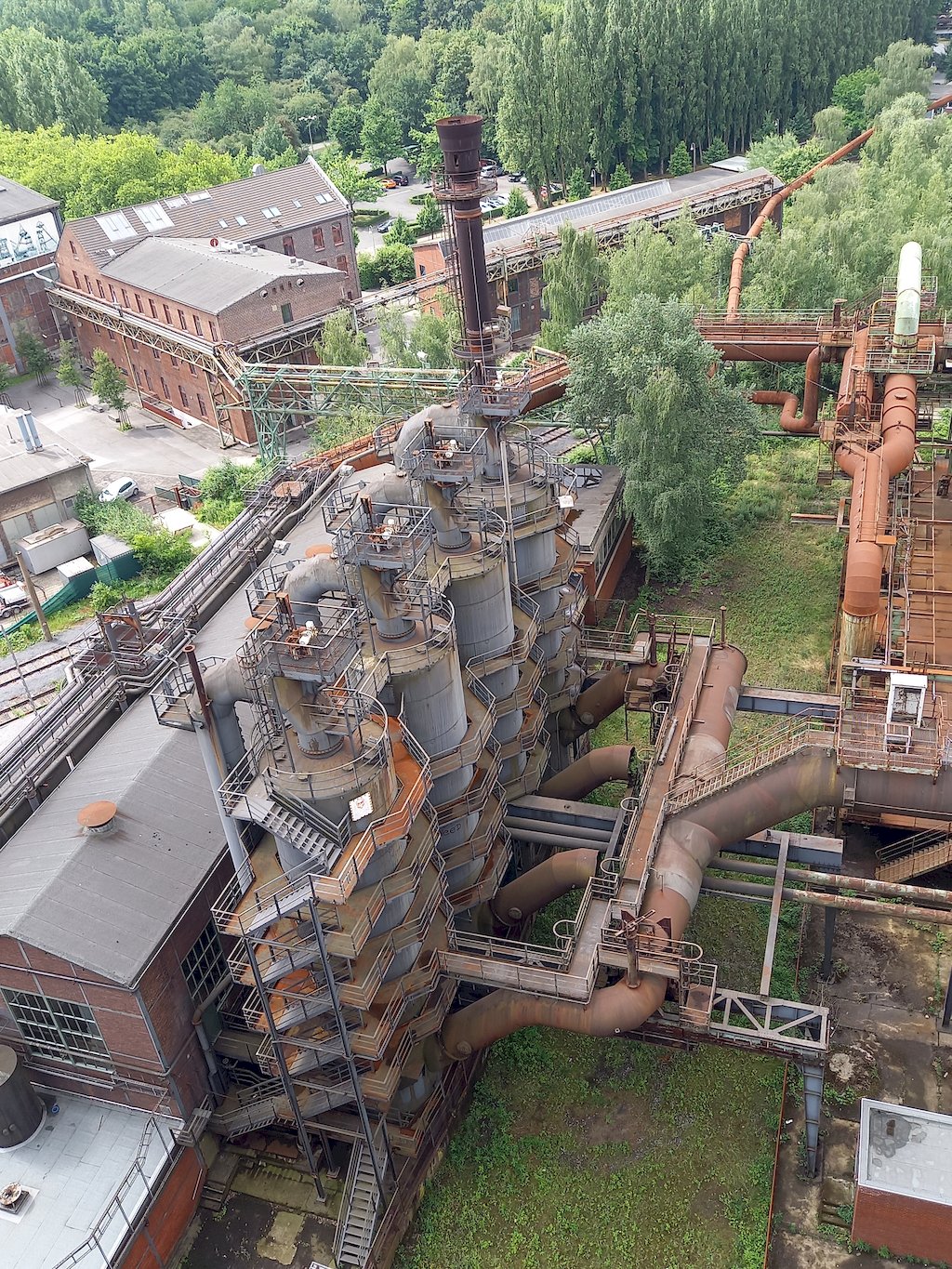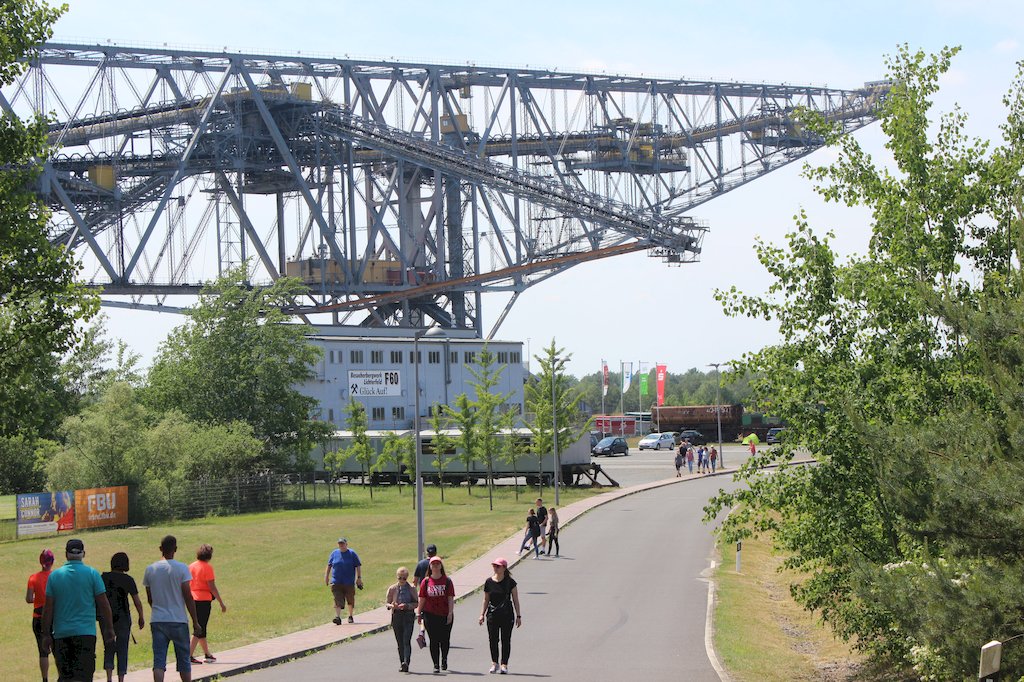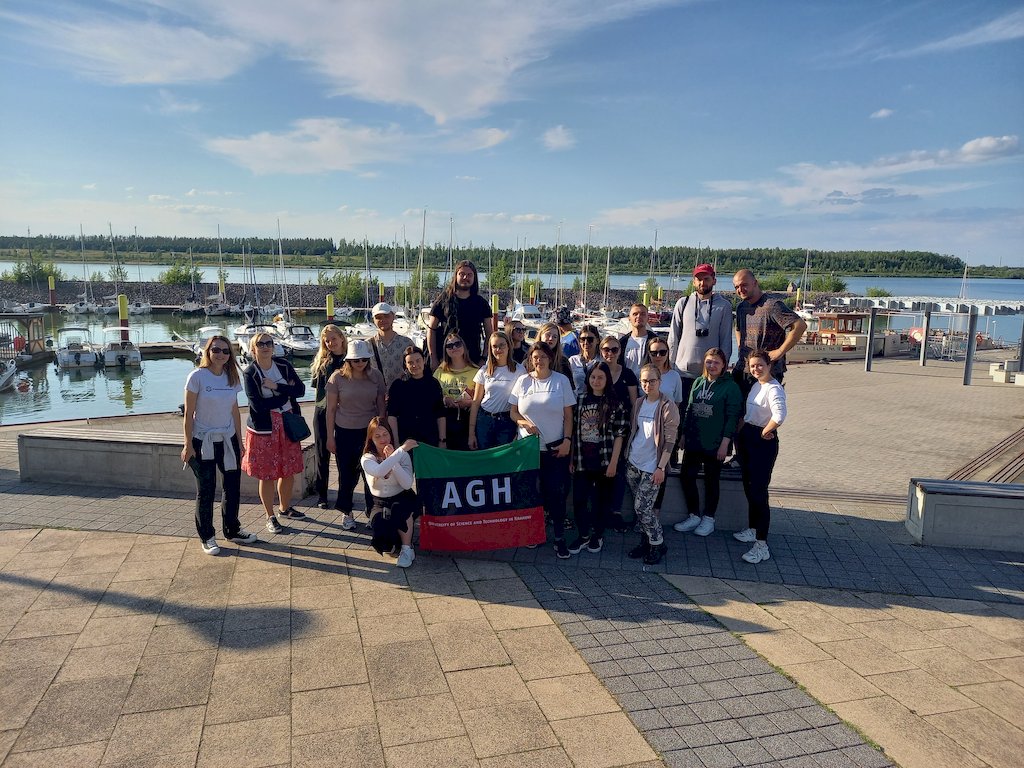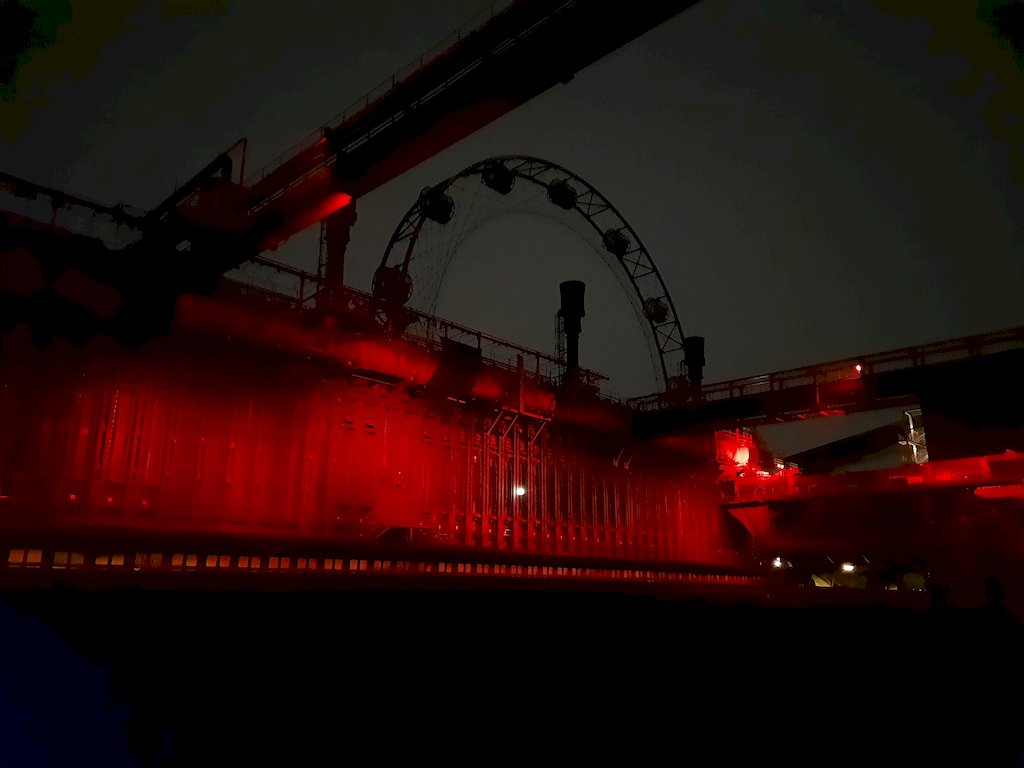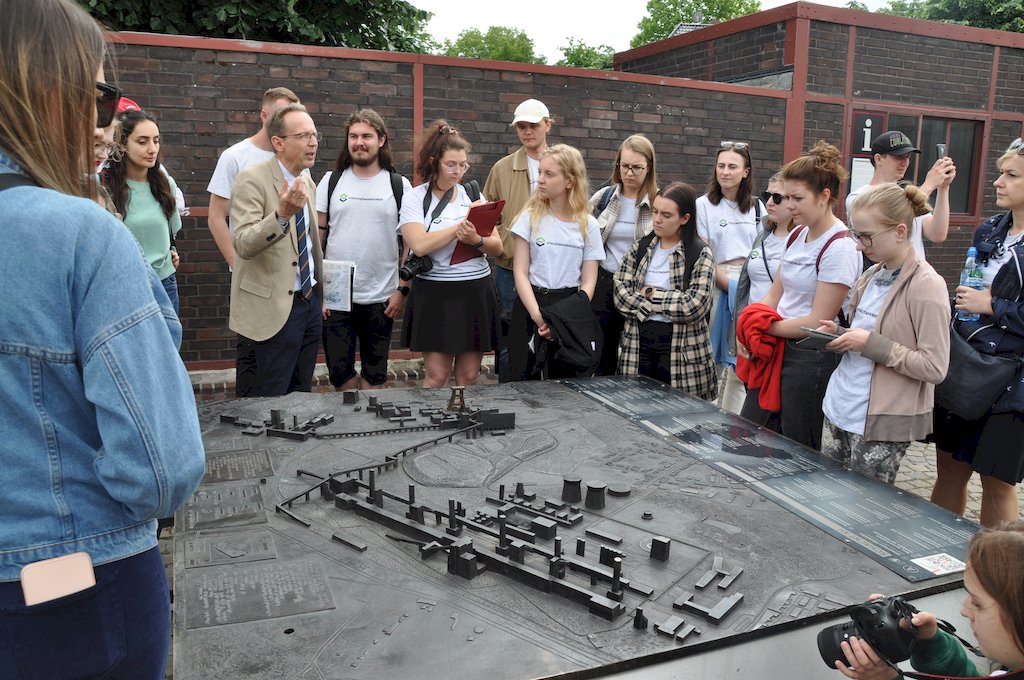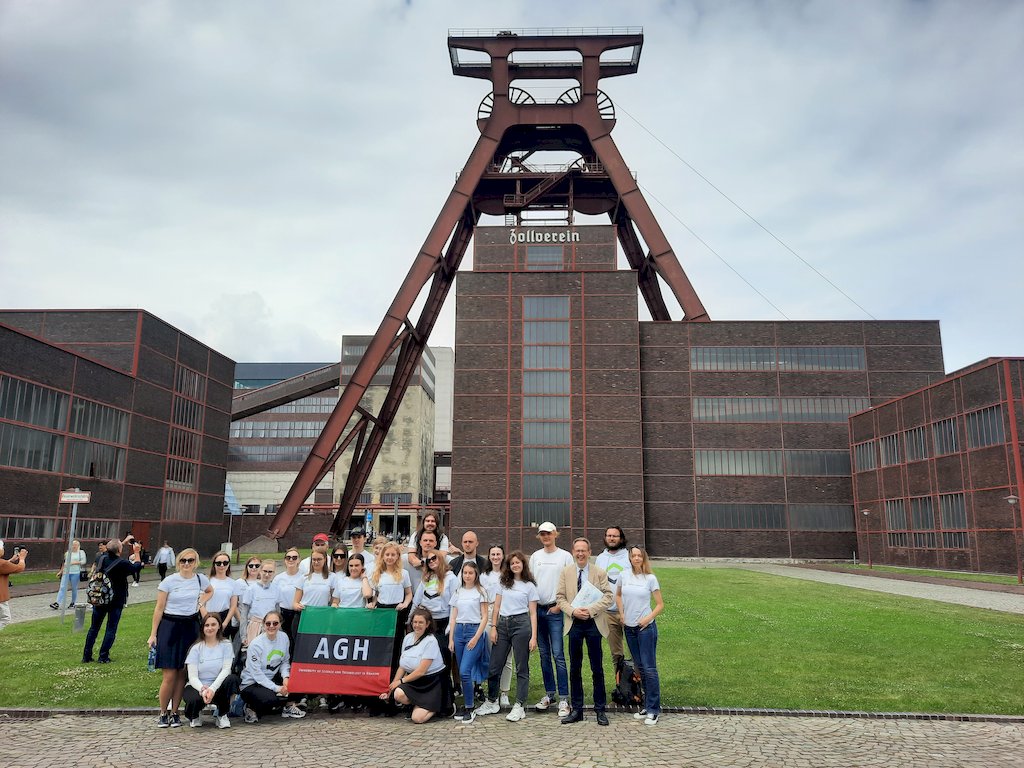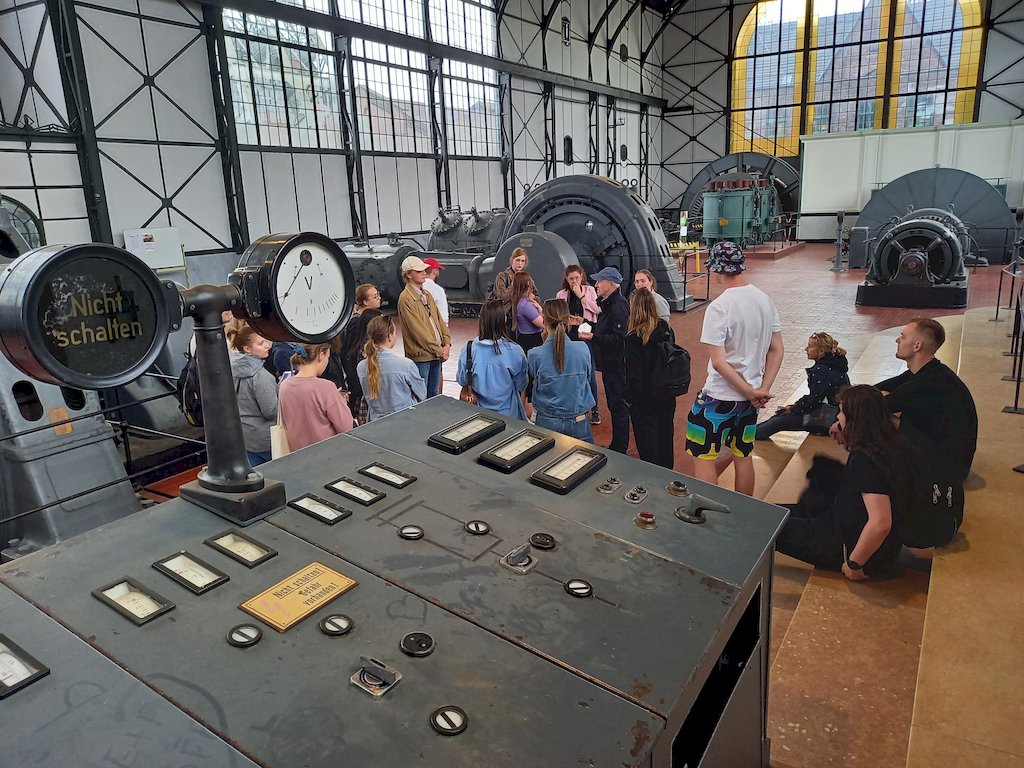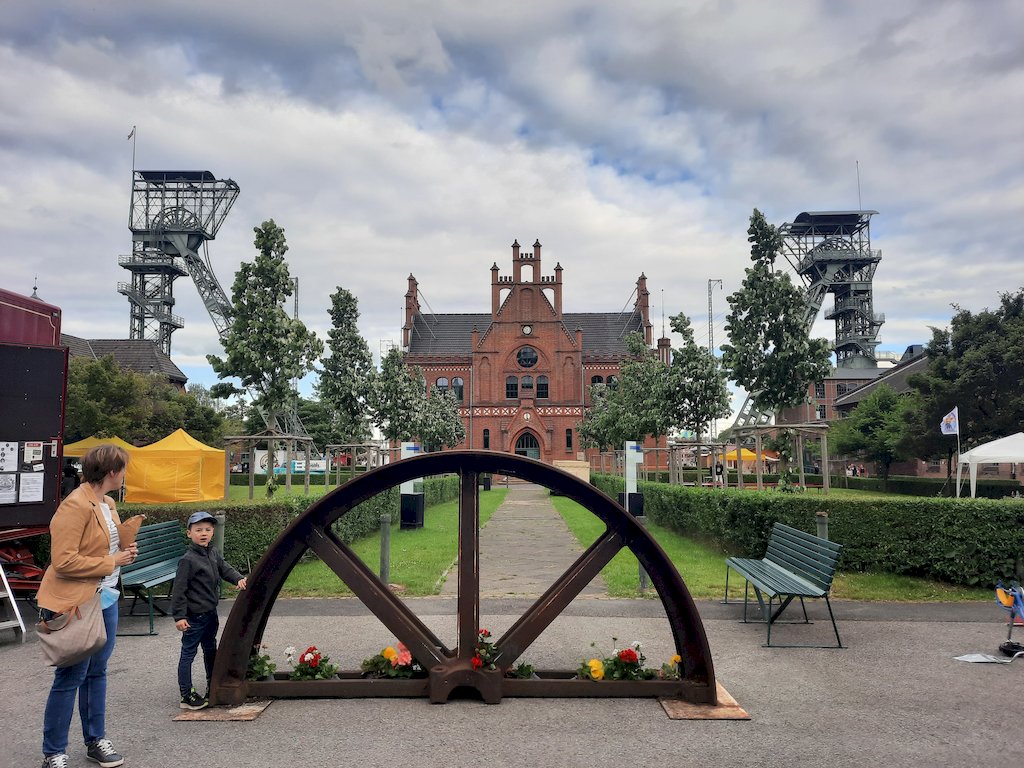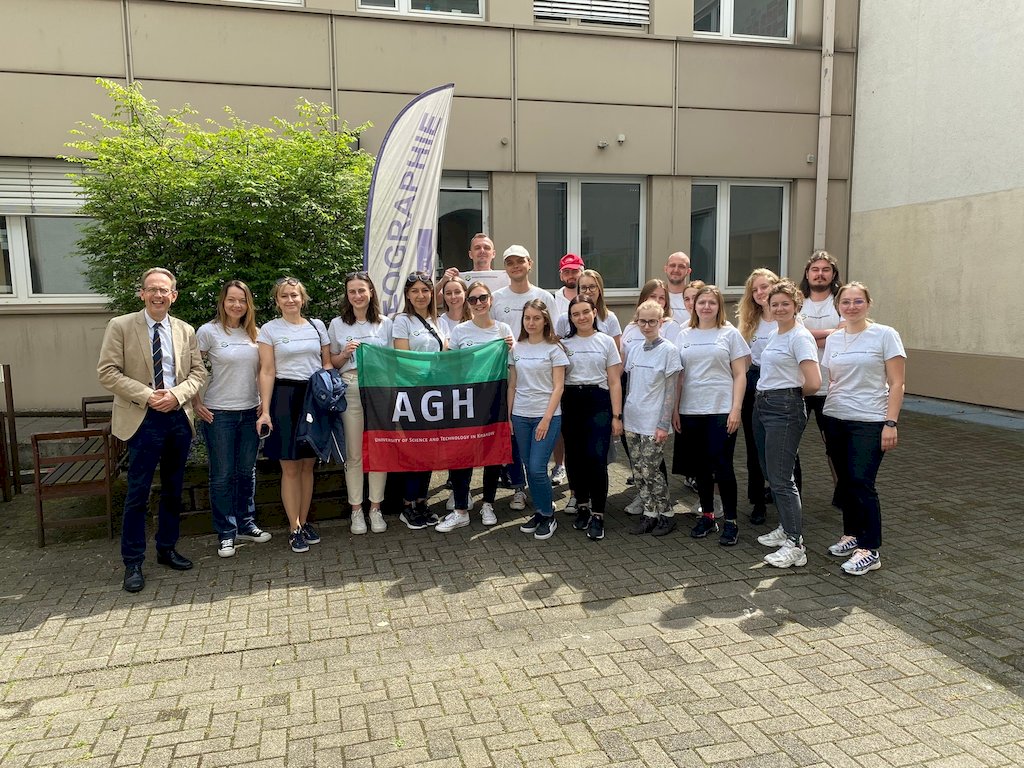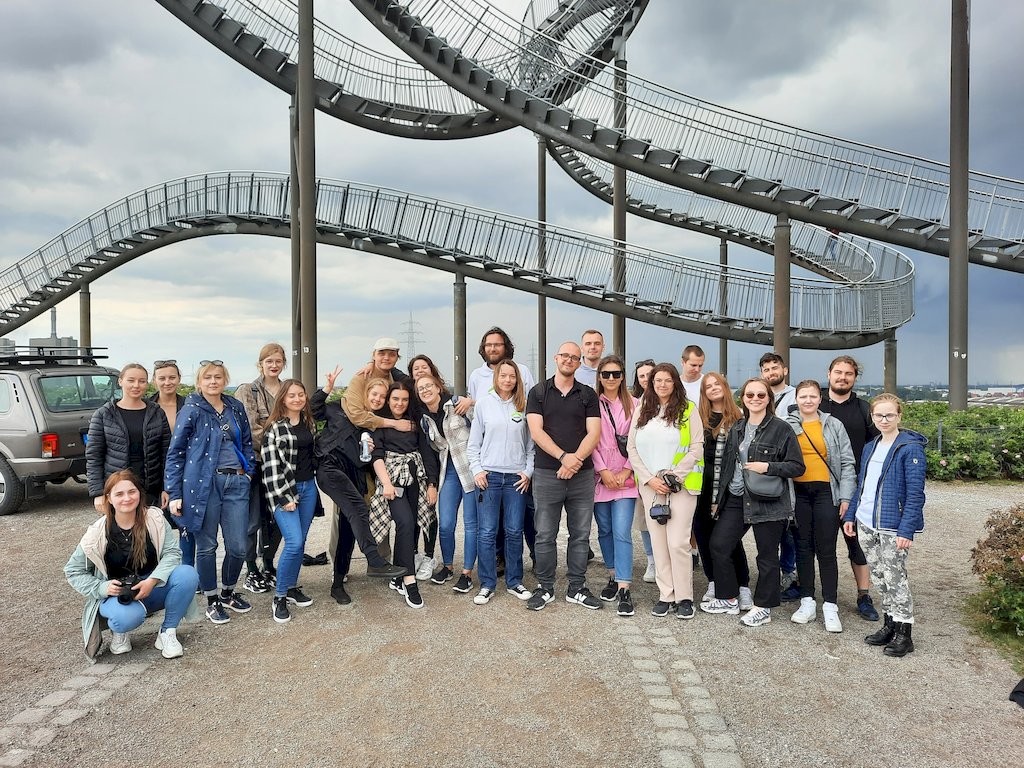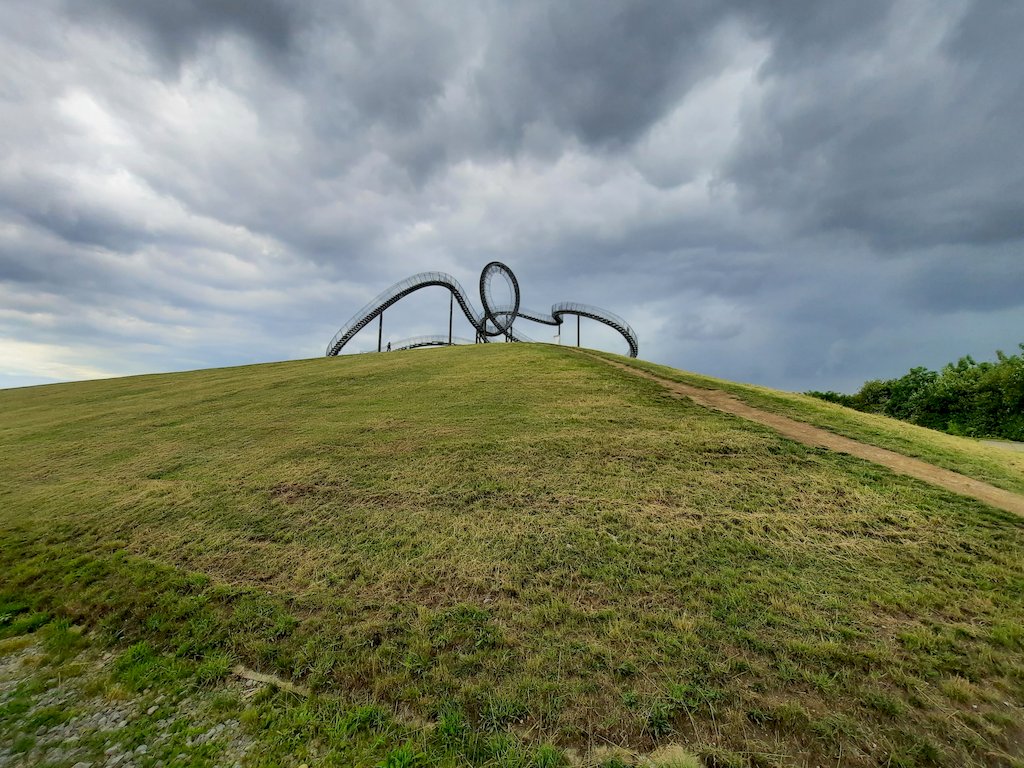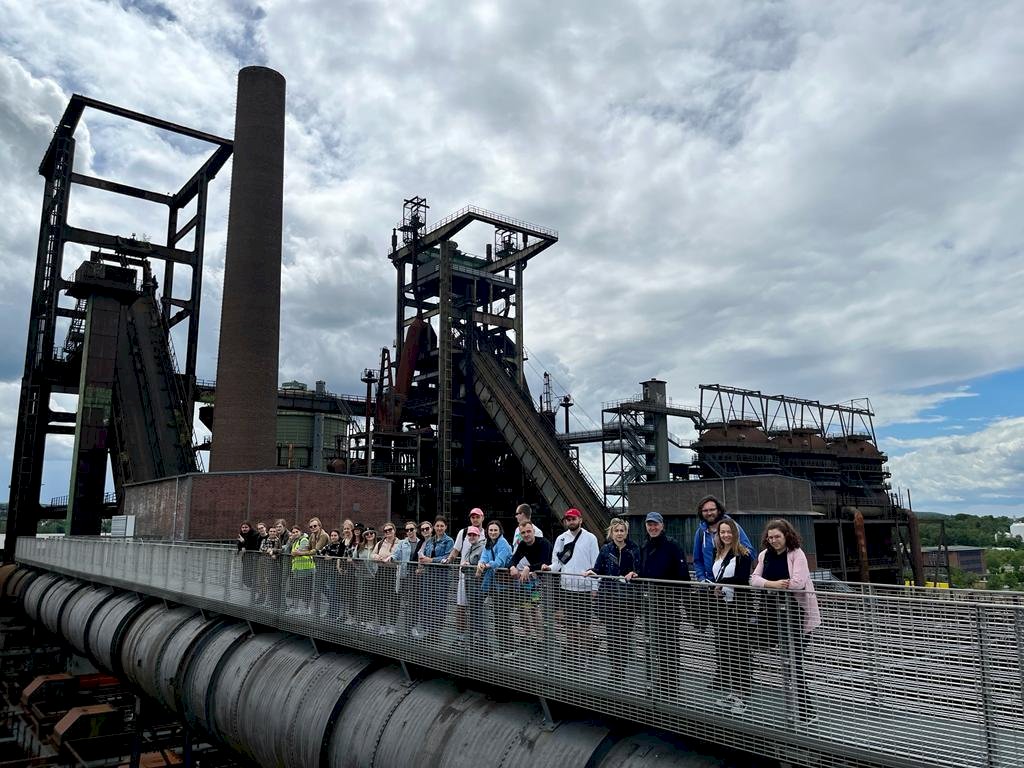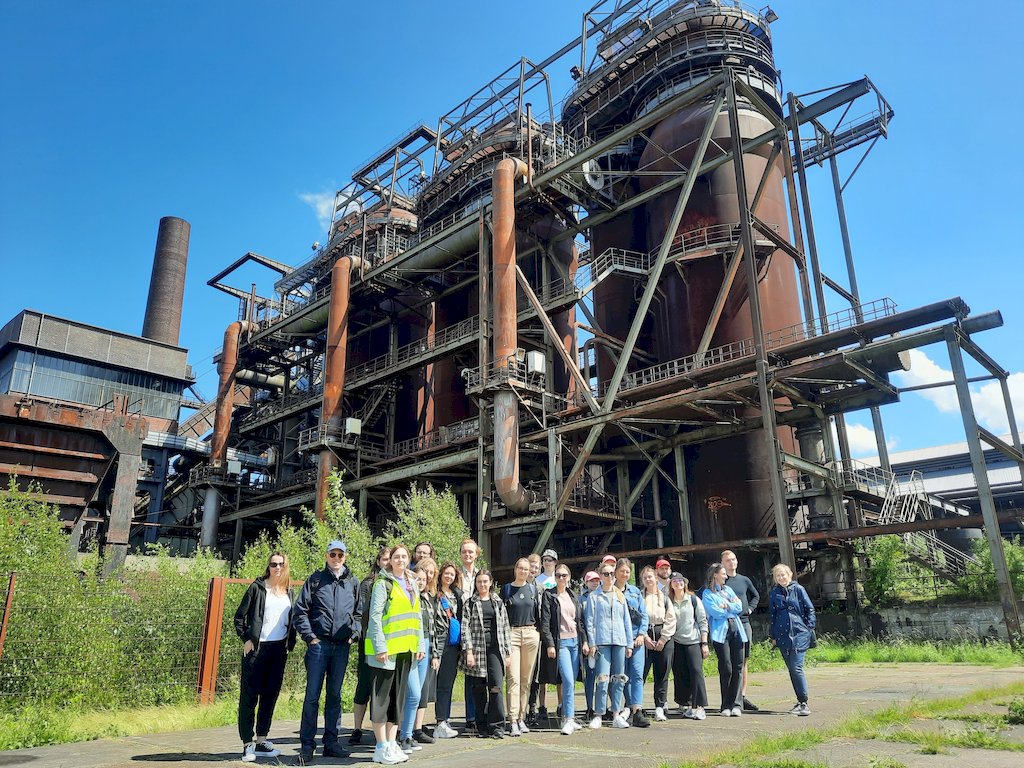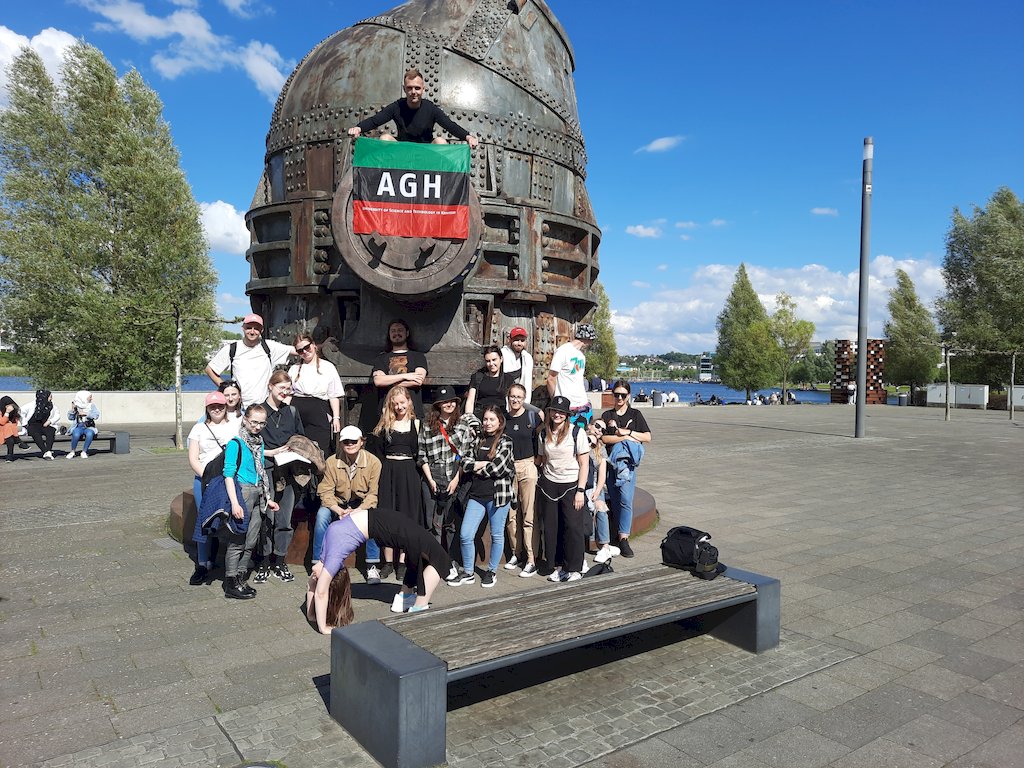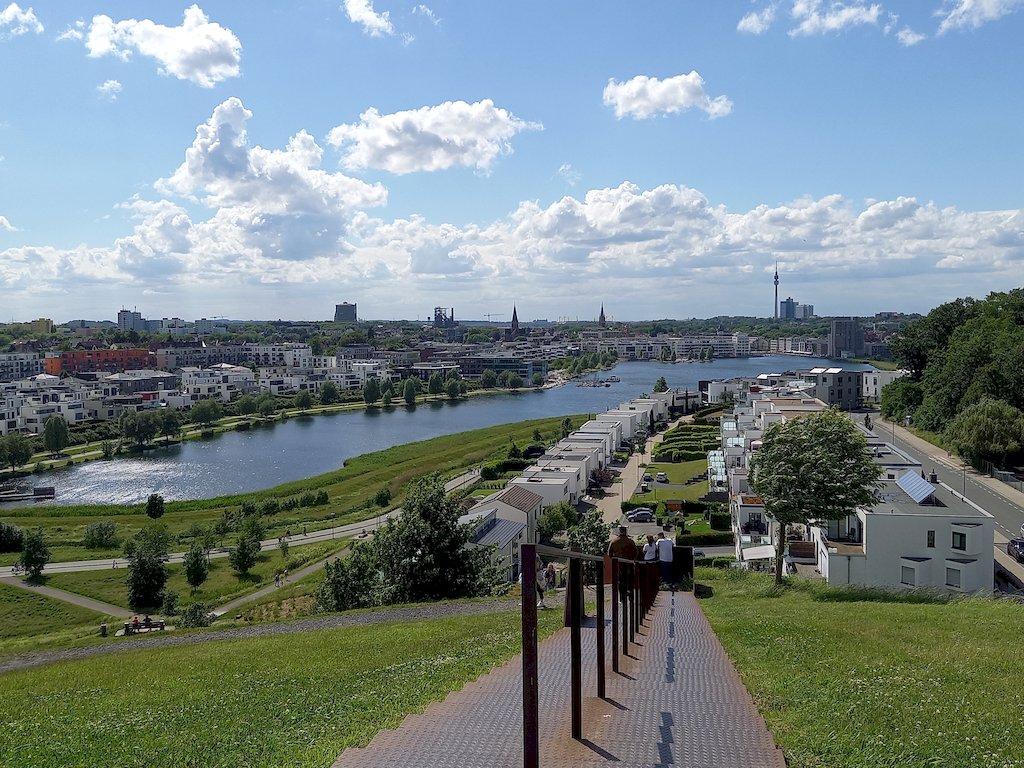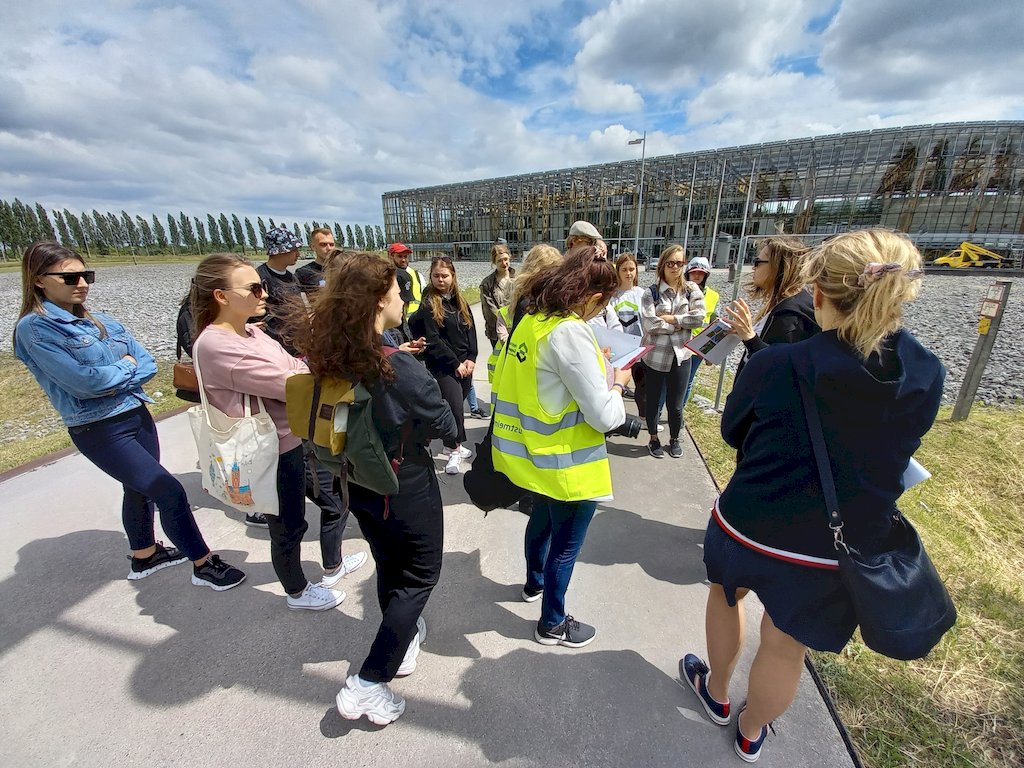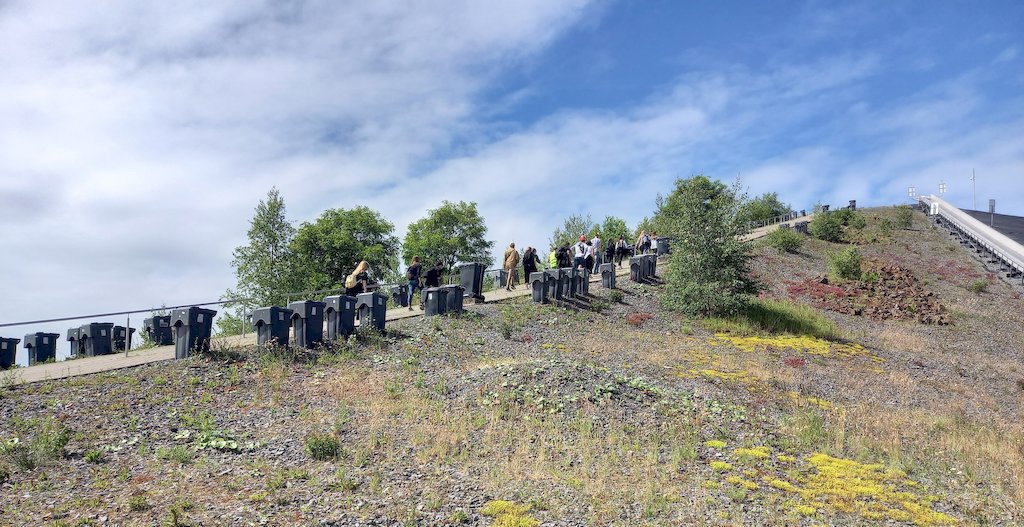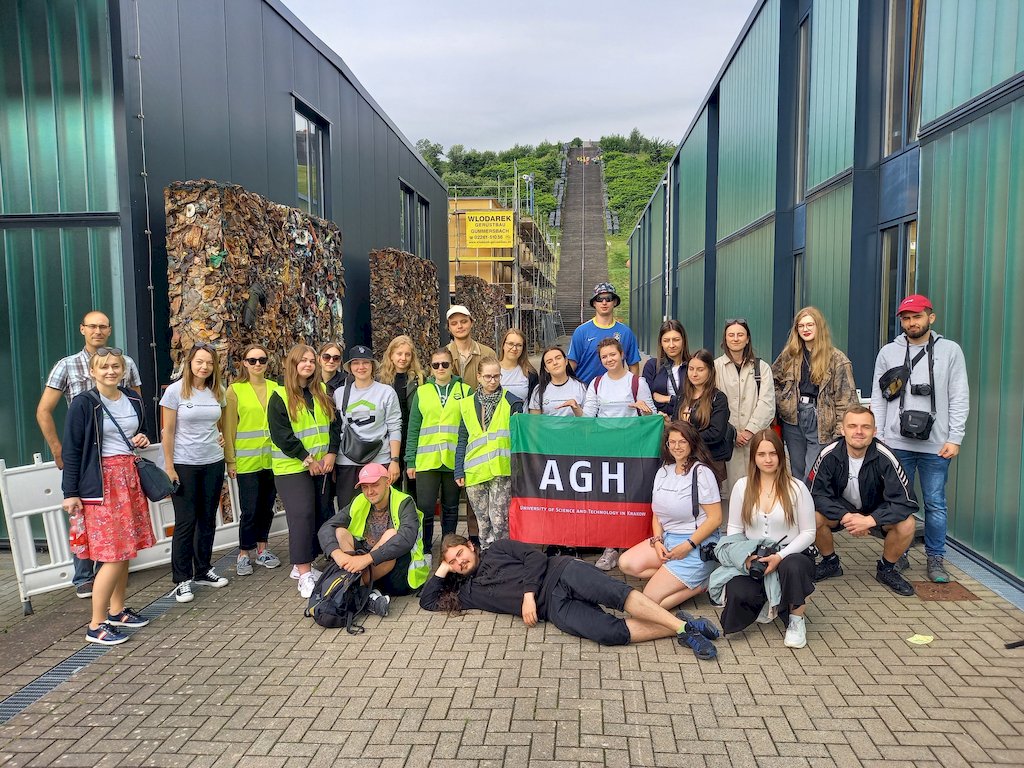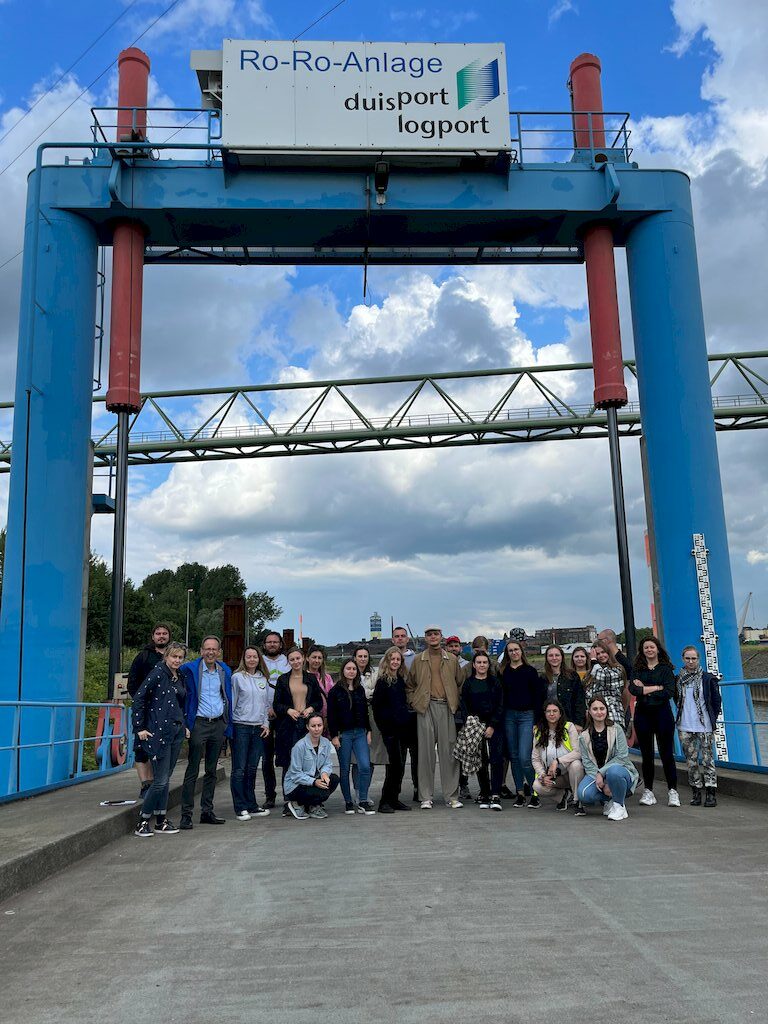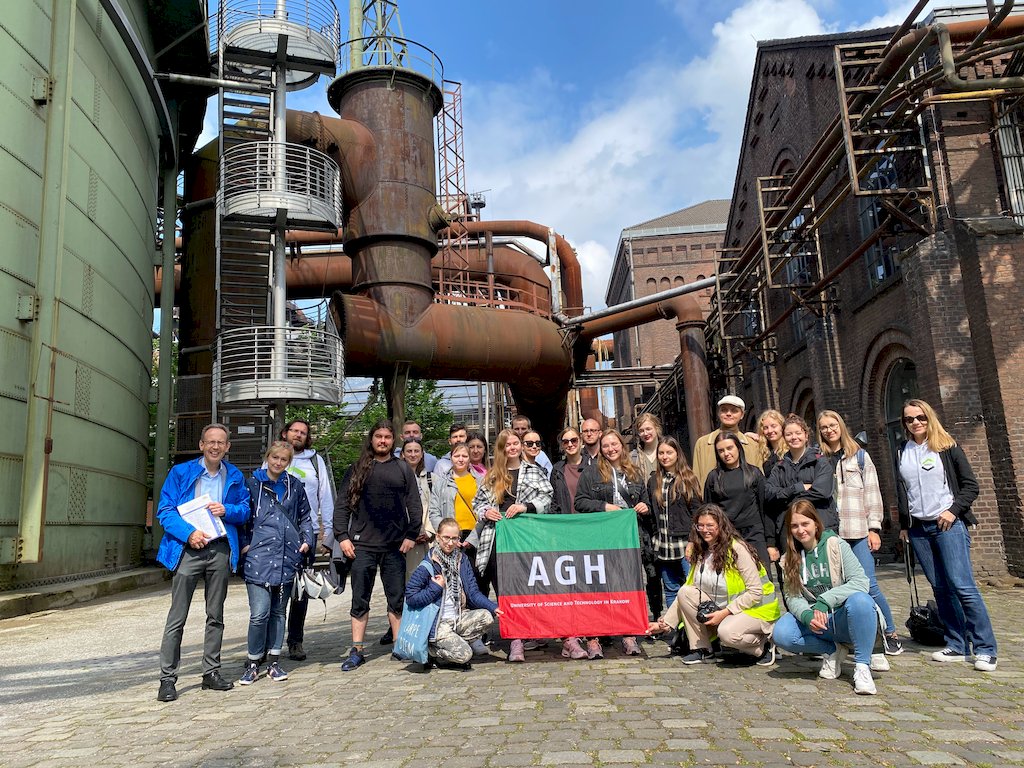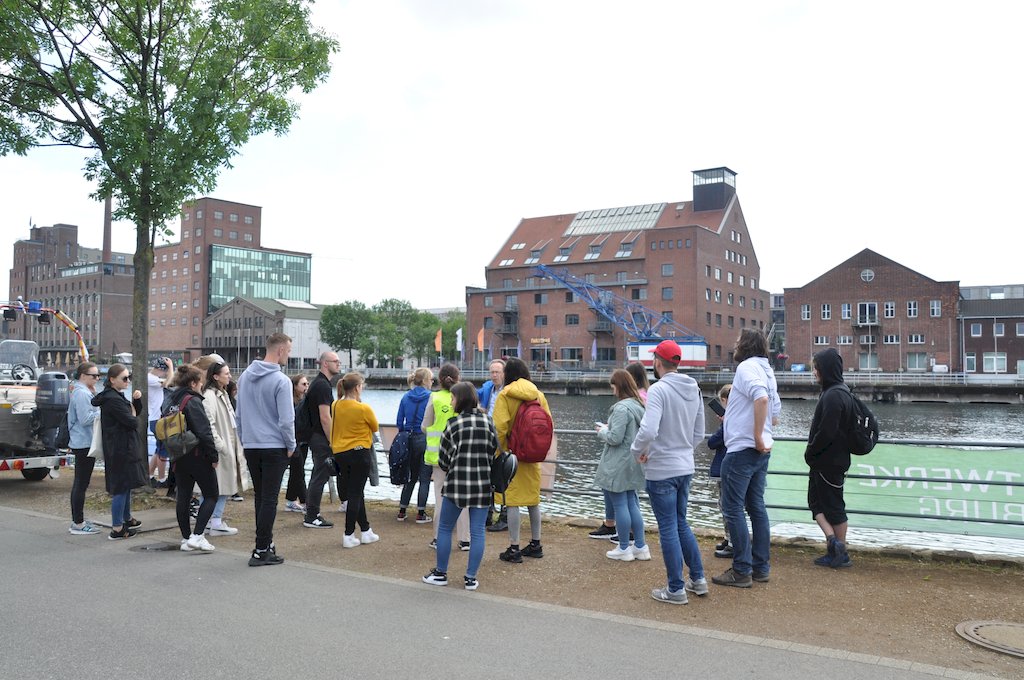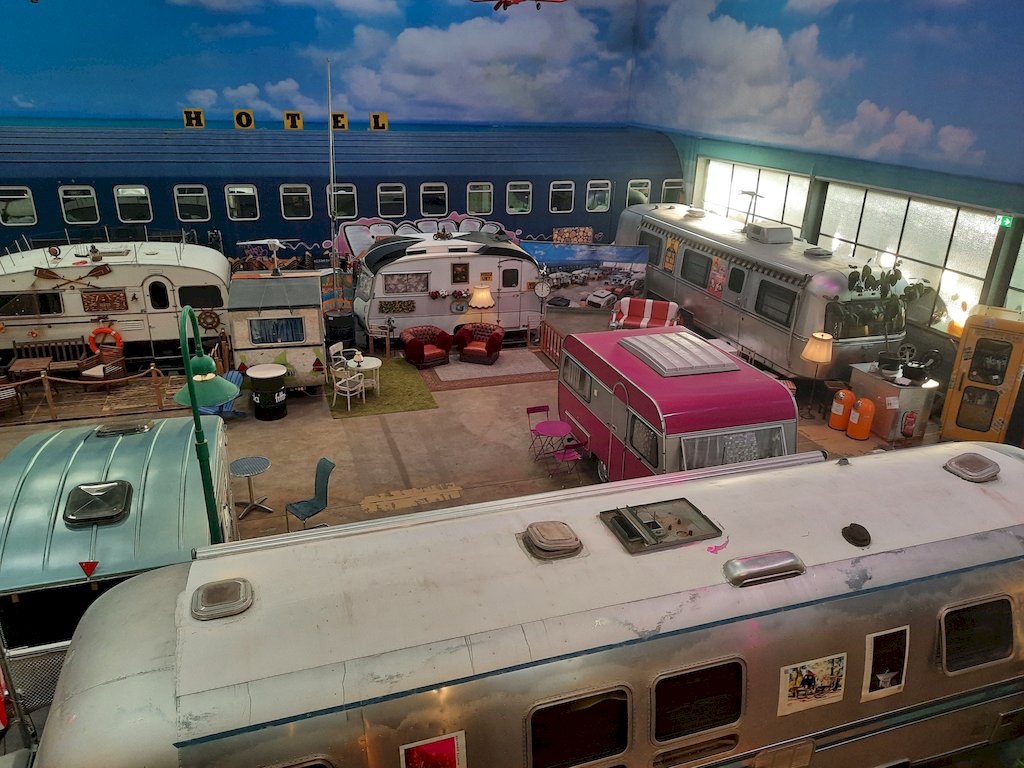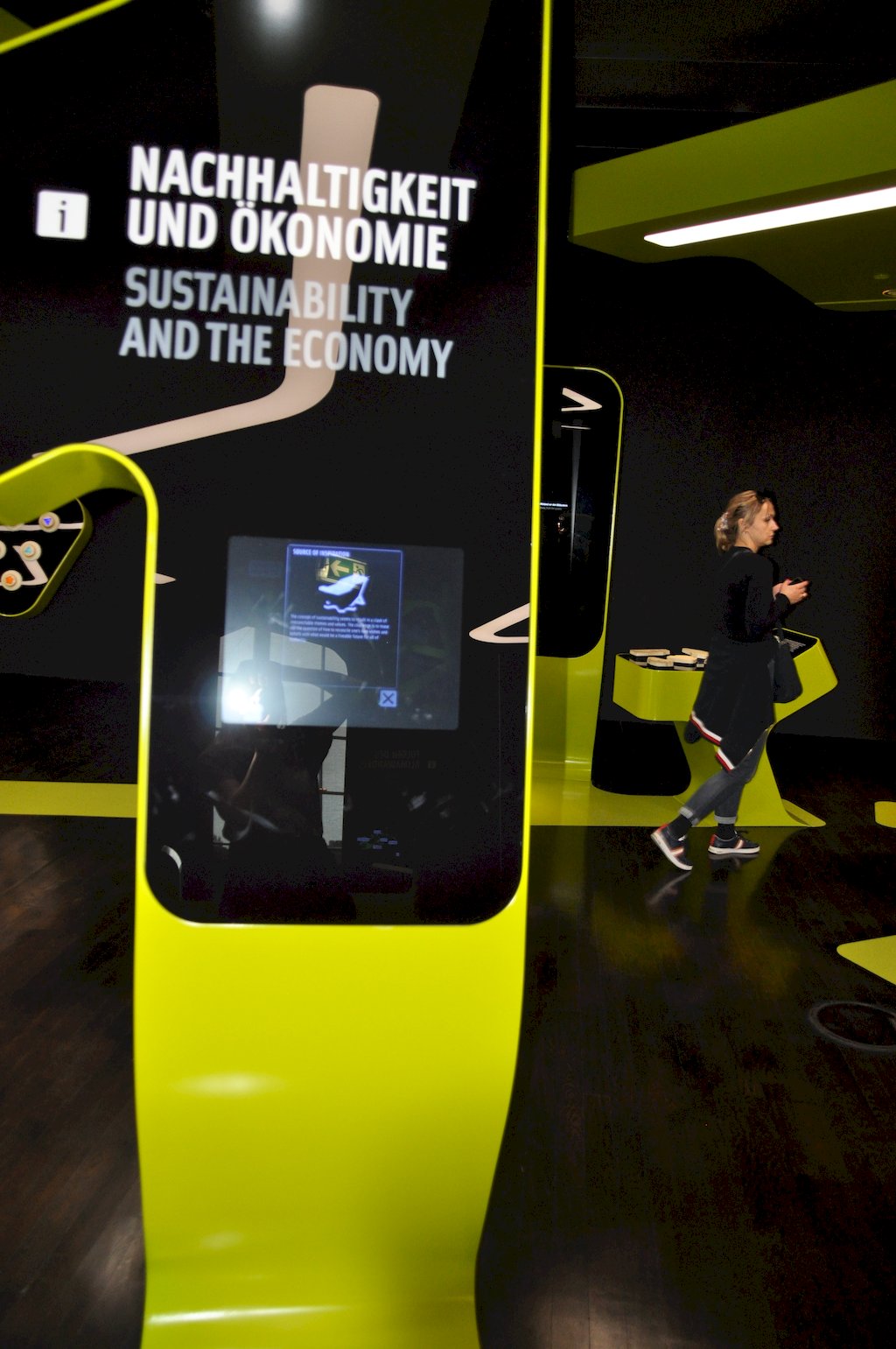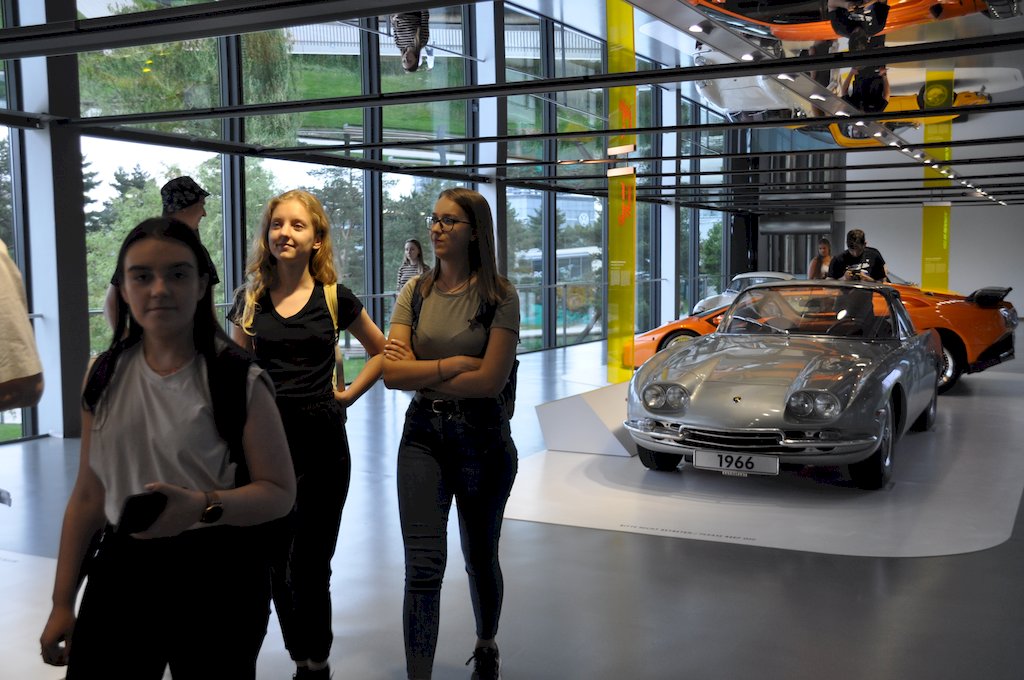
- This event has passed.
Don’t listen to the sceptics! – report from the field trip of RTZ students to Germany
July 11 All day
Goals are just stages of a journey that require courage.
The trip’s primary purpose was to get acquainted with the projects in the Ruhr Area. Once the largest industrial region in Europe based on hard coal mining and metallurgy. Nowadays, the area successfully transformed into a culture and business region thanks to revitalisation projects. Before we got to Ruhr Area, we stopped in the Lusatian Basin – at the transfer bridge (Visitors’ Mine F60), saved from demolition by a group of planners, who saw in it not a device but a monument – a sculpture of a vast scale. A similar idea had appeared a few years earlier in Machów on the Vistula River. However, there was no courage, determination and, of course, money. The next stop was the Autostadt in Wolfsburg – an industrial theme park as an area for city revitalisation. The city of Wolfsburg, located next to the Volkswagen factory, with half of the inhabitants working in this factory, successfully resists the outflow of people due to the globalisation of production. The museum, located in an attractive park next to a working factory, presents the history and future of the environmentally friendly automotive industry.
Contributory recognition of future experiences.
The Ruhr area is a real training ground for revitalisation. We managed to see only a tiny part of the revitalisation implementations. The first point of the program was the exploration of the closed Phoenix West Steelworks in Dortmund, which is open to the public while waiting for the final development by a private investor. Thanks to the Phoenix Skywalk, we reached all corners of the Blast Furnace. Employees of the hosting university, University Duisburg-Essen, showed us around the other post-smelting sites. Friedrich Schulte-Derne – Dipl. Geogr. showed us the second part of Steel Plant – Phoenix Ost. On the site of which a water reservoir Phoenix See was created, surrounded by a housing estate, service buildings and public spaces after complete liquidation and selection of the polluted substrate. Professor Rudolf Juchelka showed us around one of the most recognisable sites in the Ruhr Area – Landschaftspark Duisburg-Nord (180 ha), which was the result of the revitalisation of Steel Plant – Thyssen in Duisburg-Meiderich. Public and free admission makes this place a park frequented by residents and tourists, in which the heritage of the steel industry has been combined with nature and has been given cultural functions (e.g. a summer cinema in a former foundry hall) and recreational functions (e.g. climbing walls in silos for raw materials or a centre in a gas tank). There used to be six working steel mills in Duisburg, one of which is still in operation today. Today, the site of Steel Plant Krupp is Logport – one of the most important logistics hubs in Europe (265 ha), where over 5,000 people are employed. People and the location on the river Rhine were the reason for the revitalisation in this direction.
Opinions about which object made the most significant impression were divided – one of the favourites was the Zollverein Coking Plant and Coking Plant in Essen, with the monumental Shaft XII. A week before the last miners’ meeting at the mine, this industrial complex was declared a historical monument, which allowed the preservation of the facilities and use of their potential for the development of the city of Essen and the region. Soon it was entered on the UNESCO list. The most important buildings in the Zollverein area include the Ruhrmuseum with an exhibition at the highest level – containing both initially preserved interiors and devices, as well as modern elements, the RedDot Design Museum, PACT dance studio, swimming pool on coke installations, Triple Z – business and start-up centre or the Casino restaurant full of contrasts, into which the former compressor hall was adapted. We also visited one of the workers’ housing estates of the Zollverein Mine – Hegemanns Hof, where the layout of small apartments was to allow the miners to rest after work without limiting the bustling family life.
To see for yourself and to be able to touch is to know and understand.
Regarded as the most beautiful, the Zollern Mine in Dortmund was the first in Germany to be declared a historical monument. It was built from 1898-1904 in the Art Nouveau style to show the prestige and status of the owners. Today, it serves as a museum and culture – apart from sightseeing, we had the opportunity to participate in the “Once upon a time” festival. In turn, the Ewald Mine, preserved only in part, was transformed for cultural functions with public space (historical region), service and logistics, including the production of hydrogen – the fuel of the future. On the other hand, in the wholly demolished Mont Cenis mine area, the Mont Cenis Academy and Energy Park were established – the most ecological building in Germany. Among the many environmentally friendly solutions that have been introduced, photovoltaic panels have been installed, and a power plant operating based on methane obtained from a closed mine shaft has been built. As a result, the facility is not only energy self-sufficient but also transfers half of the generated energy to a nearby housing estate.
It is difficult for everyone to imagine the functions for which a vast gas tank – Gasometer Oberhausen (117.5 m high, 67.6 m in diameter) can be adapted. Since 1994, this industrial monument has been the highest exhibition and event hall in Europe and a vantage point. The object itself and the exhibition entitled “The Fragile Paradise”, a journey through the history of the Earth’s climate and the influence of nature, made a great impression on us.
The Ruhr is famous for its interestingly revitalised landfills – most of them have installations for which it is worth climbing several hundred steps or different lengths of paths leading to the top. One of the newest projects is Tiger and Turtle – Magic Mountain in Duisburg. At the top of the heap are roller coaster-shaped stairs for walking to symbolise the changes taking place in the Ruhr.
One of the most exciting and surprising facilities we visited was Lindlar Metabolon – the European Center of Resources Management. This multifunctional facility, based on a municipal waste and ash landfill, is still an active landfill. This is one of the circular economy models that we should pursue. It proves that landfills no longer have to be associated with stench! Metabolon is a sports, recreational and educational space (a branch of the University of Applied Sciences in Cologne – Technische Hochschule Köln) and… a tourist attraction.
On the way back, we stopped again in the lignite basin, this time in Central Germany, where we spent a sunny afternoon at the Zwenkauer See mining reservoir. It is a flood protection structure and a place of recreation (marina, beach), thanks to which the city, which was supposed to disappear after the end of mining activities, expands – so you could see the power of revitalisation.
Trips are the basis of integration and development.
During the trip, we participated in lectures, not only at the visiting University of Duisburg-Essen but in the educational facilities of Metabolon, in the field and even on the bus. On the way back, after the conference, the groups shared their impressions and observations, which turned into a lively discussion. Now students work in teams on reports that will be the subject of presentation and discussion, as well as a summary of German achievements in revitalisation among all faculty students during the workshops planned after the summer holidays.
We spent the night and ate in the revitalised facilities – one of the overnight stays was in a hotel at the UNESCO site Zeche Zollverein, another at Base Camp Bonn, created in a closed industrial hall, where the rooms were various types of trailers and “recycled” wagons. During the meals, we also saw the closed Carl Mine in Essen – a cultural and social centre established in 1978 in opposition to demolition, and the Innenhafen Duisburg – a revitalised industrial district that became part of the city centre.
The trip was entirely financed from external funds. It was the first of the cyclical field trips around European countries aimed at acquainting RTZ students with the most important implementations in the field of revitalisation. Another is planned for the summer of 2023, this time to France. In addition to acquiring new knowledge, field classes were an opportunity to integrate students of all ages of RTZ – memories are immortalised in thousands of photos – we invite you to view the selected ones.
